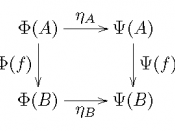The constant dilemma that Kant is dealing with in Grounding for the Metaphysics of Morals is attempting to find a rational foundation or connection between all moral conduct. Kant believed that there was an absolute moral law that carried with it a universal validity. It is through his categorical imperative that he attempts to discover and understand this a priori law. Kant effectively shows us where and when his categorical imperative can be successfully, as well as unsuccessfully, implemented.
The basic notion of the categorical imperative is to only act in a manner such that the maxim of your action could be established as a universal law. Kant believed that the categorical imperative was a necessary condition of morality, and especially for man's understanding of morality. Whatever his action may be, all man has to do is ask himself whether or not his action could hold up as a universally accepted moral law.
This would help him to determine, through reason, the righteousness of his action. In Grounding for the Metaphysics of Morals, Kant offers four illustrations relating to the categorical imperative. It is through these illustrations that he attempts to prove and further define what he thinks the ultimate principle of morality should be.
The first illustration is that of a man considering suicide. Kant felt that people have a duty not to commit suicide. The man in the example claims that it is through " self-love" that he is debating suicide. Ending his life would put an end to the pain that he experiences by living it. Kant feels that the contradiction here would question the very existence of Nature itself. The contradiction lies in the "self-love." Using the same feeling and emotion that promotes life, as a justification for ending life is inconsistent.
The second illustration...


